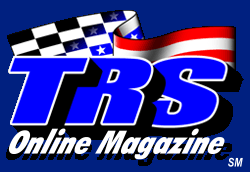 |
|
||||||||||
|
|
|
Written By Todd (Forum Member) (Click Pictures For Larger View) Part numbers for upper and lower Dana 44 ball joints. Also a set of off set 44 alignment cams are needed. First the proper ream must be obtained to re taper the lower ball joint mounting location as well as ream the 44 knuckle from the top of the steering arm as to mount the tie rod ends as they where in a 35. The 44 mounts from the bottom of the steering arm and the 35 from the top, thus it must be reamed from the top. I borrowed these from a friend. To measure depth of cut bottom the ream into a 44 lower ball joint taper. Then mark the depth with tape, this is then the depth you will need to ream the 35 beam. During the cutting operation slow speed with constant pressure works best. Donít spin the ream fast, it will cut very poorly. Also very liberal amounts of cutting lubricant should be used. 90 weight gear oil works very well. Check often when you start getting close to the depth of cut mark. Stop reaming and test fit the lower ball joint. The margin of error is slim, if not enough is taken out the ball joint will not fit. If to much then the press fit can not be obtained. By test fitting often you can better gauge how much more needs to be taken out. Depth of cut measurement on 44 beam. Un reamed 35 beam Reamed 35 beam 44 lower ball joint in reamed 35 beam 44 upper ball joint and alignment cam in 35 beam The reaming process, slow and steady. The same procedure is used in reaming the steering arm. Caution should be taken as the steering arm is cast steel and the lower ball joint mount is harder steel. So reaming the steering arm takes less force, the material is easier to remove. To accommodate the 44 upper ball joint inside the 35 beam some material must be removed from the inside of the beam. Depth of cut is easy to see from the pictures. Basically the thinner layer is ground off flush. Clearance 35 beam Unclearance 35 beam Side by side Clearance process, notice the layer that is ground off. After this was done I ran a few beads of weld around the upper ball joint pinch to retain strength. Although Im not sure if it was really necessary. Now the lower ball joint is installed and torque to spec. Without the 44 alignment cam in place move the knuckle from lock to lock in different orientations of the upper ball joint. This is to see in what orientation of the upper ball joint causes the most interference with the 35 beam. Then mark and clearance the 35 beam. Not much material needs to be removed to accomplish this. Interference of 44 knuckle on 35 beam Interference of 44 knuckle on 35 beam Clearance of 35 beam Clearance of 35 beam After this is complete the beams can be installed into the truck. Set the toe, caster and camber, caster and camber done just as would be done on the 35 with the top alignment cam. Once alignment is complete the upper ball joint nut is torque to spec taking special care as the alignment cam is not spun. Then the pinch bolt is torque to spec. The procedure for the upper ball joint differs from that of the 35 as the 35 upper ball joint does not have a taper, the pinch bolt holds the upper in the cam. While the 44 upper does have a taper. So the upper ball joint nut presses the ball joint stud into the 44 alignment cam retained a press fit. Then the pinch blot holds the alignment cam thus retaining the upper ball joint. Assembled without upper ball joint nut or pinch bolt in place. The following setup is just like any other 44 after the knuckle is bolted up. 35 brake lines also bolt up to 44 calipers. Rollin on 44 outers
Why I did it: I already had a lot of time in fabbing up my own lift for the 35, and have it tuned how I want it. But I kept on blowing warn hubs and didnít want to buy Warn Jeep hubs as I knew I could do the knuckle swap for cheaper. The main key thing here is the axle benefits of the 35/44 hybrid. So you have Ĺ ton outers meaning you have better hubs, wheel bearing spacing, larger rotors and calipers then on the 35. Shaft wise, the Dana 44 stub shafts are larger than the stub shafts on a Dana 35. It's interesting to note, that the Dana 44 shafts have a neck-down on them that tapers down to 1.09" inches. The smallest point on the Dana 35 shafts is 1.16" inches where it tapers down to go in to the carrier. The only shaft on a Dana 35 that is smaller than the neck-down on the Dana 44, is the Dana 35 stub shaft, which is 1.0625" inches. Therefore, swapping the Dana 44 stub shaft on to a Dana 35 will actually result in a axle assembly with larger axles than the Dana 44.
Also this was WAY faster and cheaper then doing a SAS. Additional Notes: The Knuckles I used where 1984-1986 I believe. Just about any TTB 44 knuckles should work. The only special tool need is the ream. The ream used is 1-1/2Ē taper per foot. The Dana 44 stub shafts use the same u joint as Dana 35 so shaft assembly is just like a 35 shaft but with the 44 stub in place of the 35 stub. The stock brake master cylinder works fine with the 44 calipers. So it does not need to be replaced but could be if you see fit
|
|
|